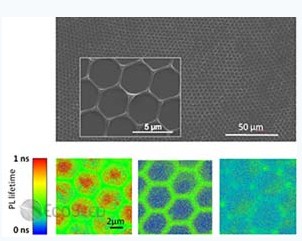Scientists at the US Department of Energy's Brookhaven National Laboratory and Los Alamos National Laboratory have developed transparent conductive materials that may be used to generate electricity for windows.
The material contains carbon-rich fullerenes and semiconducting polymers. Under strictly controlled conditions, the material can self-assemble to form a micron-sized hexagonal cell population over a relatively large area.
This forms a transparent film that has been shown to absorb light and conduct electricity over a wide range.
The material is still essentially transparent because the polymer chains are only dense at the edges of the hexagon, while the rest of the material is very thin and loosely dispersed throughout the parts.

Hexagonal sides are densely arranged to absorb intense light and can be easily generated
“Although such a honeycomb polymer film (such as polystyrene) has been used before, this is the first time that this charge-separating material has been able to efficiently absorb light and generate charges.†Chief Scientist Mircea Cotlet, a Brook Sea Physical chemists at the National Laboratory of Nanoscale Functional Materials at the National Laboratory said.
The hexagonal shape itself takes full advantage of the fact that the hexagonal side is densely distributed and absorbs a lot of light and can also facilitate power transmission, explains Mr. Cotlet.
The scientists used a variety of scanning probe microscopes and electronic techniques to test the homogeneity of the honeycomb structure, and the optical properties and costs of various parts of the honeycomb structure.
Scientists also found that the extent of polymer packing is determined by the rate of solvent evaporation, which in turn is determined by the charge transfer rate.
"The slower the solvent evaporates, the more compact the polymer and the better the charge transfer," said Mr Cotlet.
The study was supported by the Department of Science and Energy in Los Alamos.
Part of this work was conducted at the Center for Functional Nanomaterials and the Center for Nanotechnology.